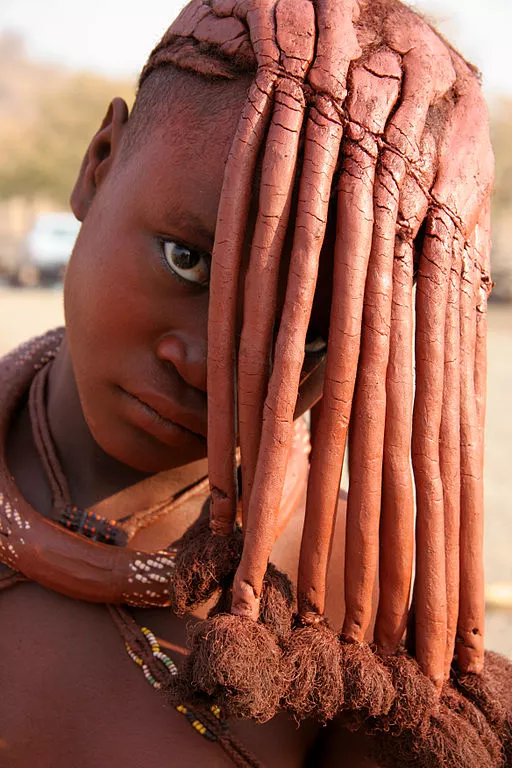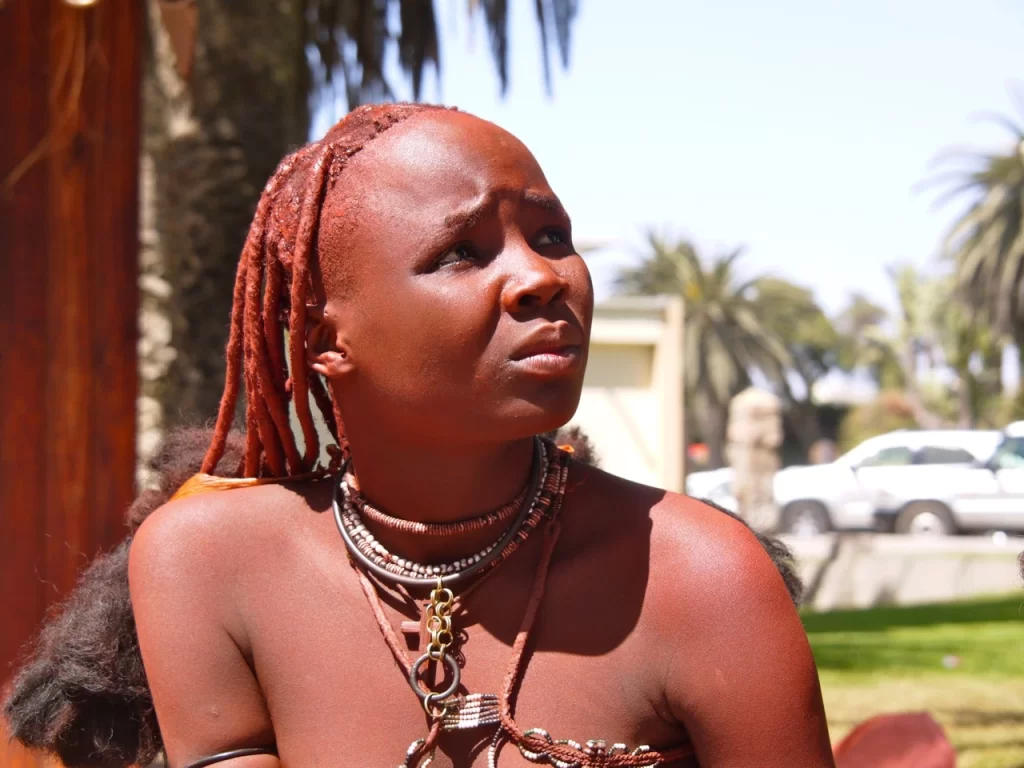Within the African continent, some tribes have maintained their ancestral culture and traditions. Their dressing, religion, food and marriage ceremonies and sometimes, education, are all done within the confines of what their ancestors passed on to them. Such tribes are the Himba People of northern Namibia and southern Angola, the tribes living around the Dogon Valley in Mali, the Maasai tribe of Kenya and the Pygmies, who live in Congo. The Himba people, however, remain the most fascinating.

The Himba people (OmuHimba in singular and OvaHimba in plural), are approximately 50, 000 indigenous people inhabiting the Kunene region of Northern Namibia, formerly known as Kaokoland, and also the region around Kunene River in southern Angola.
The Himba, who split from the Herero people, a Namibian tribe, are culturally different from the Herero. Ovahimba are semi-nomadic pastoralists, speaking the OtjiHimba language, which is a variety of the Herero from the Bantus. History considers them as the last semi-nomadic group in Namibia. They farm crops as maize and millet and they live in base homesteads, sometimes moving within the year searching for water. Below are some six interesting facts about the Himba people.
- They Communicate With God Through Fire
The OvaHimba have an organized religion in which they worship Mukuru as their Supreme Being. They use the Holy Fire to communicate with Mukuru, who they believe only blesses and does not curse. They also revere their ancestors, believed to have the power to bless and also to curse. With the Mukuru being a busy Being in a far-away realm, the ancestors from their clan act as Mukuru’s representatives.
Each family or village among the Himba has its own sacred fire, called okuruwo, which is only managed by a firekeeper. Every seven to eight days, the fire-keeper approaches the sacred fire to communicate with Mukuru, through the ancestors, for the sake of the whole family.
As the sacred fire burns, the smoke rises heaven-wards, enabling the fire-keeper to communicate with the ancestors, who directly stand on the position of Mukuru, the busy Supreme Being up there. Outsiders and uninvited visitors to the village are not allowed to cross the sacred line of the fire or the firewood stored on a nearby sacred stone to keep it burning whenever it is needed. The holy line is a long stretch from the main entrance to the chief’s hut, all the way past the holy fire, to the entrance of the cattle pen.
- The Do Not Bathe Using Water

Amazingly, the Himba women are not allowed to use water for self-cleaning; be it bathing or washing clothes. Mostly, this is attributed to the harsh climatic conditions which make portable water accessibility a serious challenge. However, it also dates back to a period of a severe drought, which caused water scarcity among them and only men would use water for washing.
This does not mean the women do not bathe, though. On a daily basis, they pick leaves and small branches from the Commiphora trees, put them in a bowl and add some burning charcoal. As the smoke rises, they bend over it. The heat makes them sweat, removing the dirt from the body. For full body baths, they would use a blanket to cover themselves, allowing the smoke to get to the whole body, trapped under the blanket.
They also maintain hygiene by applying red ochre onto their skins and hair. The red ochre protects the skin from the scorching sun and also keeps the skin moist and clean. This allows them to survive in the harsh desert climate and the extreme environments they live in, the Kunene region.
- They Offer Sex To Guests
The Himba people are generous, offering rounds of sex to willing guests. The man shows pleasure on seeing his guest and honors the guest by giving him his wife for a night while the husband sleeps outside that room. It is called Okujepisa Omukazendu treatment.
Though the woman can decide whether or not to offer sex to the guest, they must sleep in the same room.
This tradition keeps jealousy at bay among the Himba, encouraging solid relationships. The wife must submit to all the demands of the husband and she holds almost no power in decision-making.
- The Himba Jewelry Represent Ancient Customs
The women perform most of the domestic duties, which also includes making clothes, handcrafts and jewelry. Their jewelry is a differentiating factor on age, tribal association, marital and civil status as well as wealth, bowing to their ancient customs.
Ovahimba men and women decorate themselves using jewelry such as necklaces, arm and leg bracelets and other jewelry. It is made of copper, cloth, grass, beads, ostrich eggshell among other materials and weighs up-to 40 kilograms.
Women also wear the Himba crown, called erembe. It is made of goat or cow leather and is set on a girl’s age after she reaches puberty. When a woman gives birth, she is given the Ohumba necklace as a gift. It is a huge shell suspended using beads, a gift symbolizing fertility, hanging across the breasts.
- They Protect Their Skin And Hair Using Red Ochre
The Himba are famous for using the red ochre, natively called the otjize, which they apply as a lotion on their bodies and hair. It is used to maintain the skin clean and moist as well. It also contributes in preventing the skin from the extreme heat from the scorching sun rays.
The valued red ochre cream is prepared by grinding the ochre stone, also known as hematite, to powder or small pieces. The minute pieces are then mixed with butter and heated a little using smoke. After that, it is ready for use. The red color symbolizes the earth and blood, two essential life-elements among the Himba.
The red ochre, however, is not just applied by anyone or at any age. The men do not use it while the women, specifically the girls, only start applying it when they become of age and able to take care of themselves on hygienic matters.
- They Take Porridge All Through, called oruhere ruomaere
The Himba people have embraced their traditional food, which is porridge. Each morning and evening, they boil water and add flour, some sour milk at times and rarely, some cooking oil. It is then ready to be served!
The porridge is usually cooked using maize flour or rarely, using millet flour, which they call, mahangu.
In very rare cases, maybe during a marriage ceremony or other very important event, do they eat meat. The number of cattle determines the wealth of the man and therefore, meat is not part of their meals, but the milk from the cows is.
